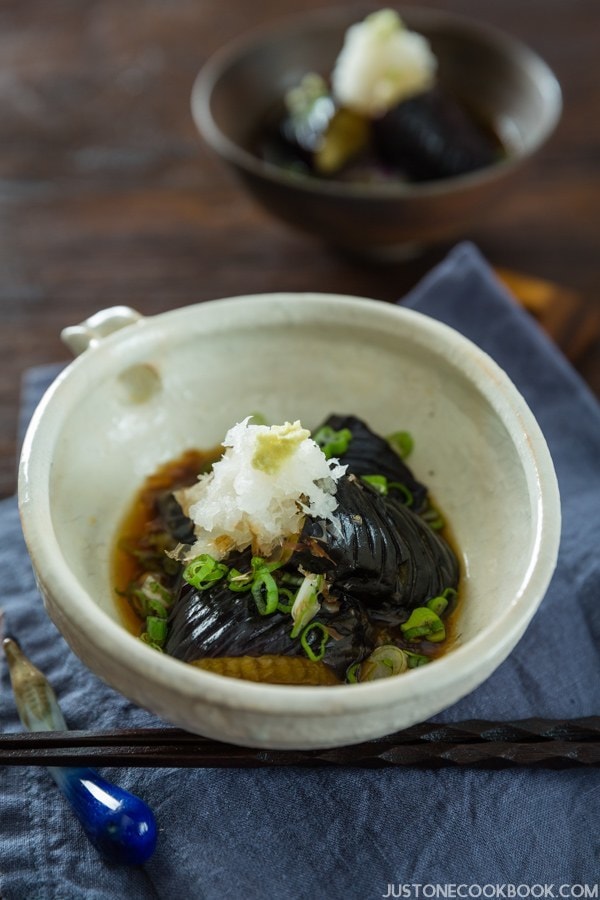
Can you adore eggplant? This Eggplant Agebitashi could be your brand new preferred for eggplant dishes. The lengthy, thinner Japanese eggplant is very first deeply-fried right up until crispy brown, then soaked in the flavorful dashi and soy products marinade based broth.
Certainly one of the best eggplant recipes can be a Japanese plate called Nasu no Agebitashi ().
Nasu in Japanese signifies eggplant, and agebitashi signifies serious-fried and drenched. The recipe is made up of strong-fried eggplant drenched in light-weight dashi and soy sauce dependent broth. The eggplants process all of the delicious flavours in the broth and that meal is merely tasty. If you’re keen on eggplant, I am aware you’re going to love this meal!
Watch How You Can Make Eggplant Agebitashi
Although being raised in Japan, my mom created plenty of eggplant meals and it constantly made me asked yourself that which was so good about eggplant. Individually I enjoy crispy and crispy foods, and mushy, soft eggplant had not been among the best fresh vegetables.
Following I got to the U.S. and attempted far more types of eggplant recipes, I began to love eggplant. One of several eggplant tasty recipes I was excited about was grilled eggplant sandwich with roasted bell pepper.
Then I started to make Japanese eggplant recipes that i didn’t attention significantly for before. Today’s recipe, eggplant agebitashi became one of the best go-to eggplant selections. It’s a straightforward dish, nevertheless you’ll be very impressed how delightful eggplant may be right after it absorbed every one of the types from the dashi broth.
Valuable Preparing food Procedures for Eggplant Agebitashi
This dish demands some Japanese cooking strategies that you could not be aware of. So let’s go over them initial.
1. Suage ()
Strong frying greens with out covering any flour or mixture is called Suage in Japanese. Su indicates organic or uncoated in this case, and age group (pronounce a-geh) signifies serious frying. You could ponder what’s the thought behind serious frying eggplants.
Suage removes bitterness of ingredients (such as in eggplant) and covering with essential oil helps prevent de-pigmentation of your eggplant. By cooking food with essential oil, eggplant keeps its wonderful shade. The eggplant will take in oil first, but then will launch it following preparing food.
Short deeply frying in popular oil makes the elements crispy on the outside, and also the remaining temperature will slowly prepare the inside the elements. As soon as made, the sore eggplant easily soak up the broth.
You might short fry eggplants. Nonetheless, you must make certain that the eggplant epidermis is beautifully coated with oil always. I would recommend to blend the eggplant and essential oil within a huge container very first and massage the eggplant entirely with gas with your fingers initial prior to superficial fry. In the event you don’t, the liquid and humidity escaping from your eggplant will discolor and lead to patchy epidermis.
2. Kakushibocho ()
Gentle scoring in the components is named Kakushi-bocho in Japanese. Kakushi or kakusu signifies concealed and hide, and Bocho or hocho indicates a blade. This procedure is used to ensure
- Temperature will check out the component easier
- Flavors (from the broth or seasonings) will likely be ingested greater
- Component is going to be much easier to minimize with chopsticks
Officially, we score the substance without which makes it also obvious (so when you provide, it’s not clear). That’s how the name “kakushi” or “hidden” comes from.
We make use of this way of ingredients which take time and effort cooking by means of and take in flavors for example daikon, eggplant, and konnyaku.
Just how much should we report? It genuinely depends on the thickness of your substance, but remember not to credit score too profoundly or else it could split the component away from each other.
The same method may also be called Kazari-bocho when the scoring appears pretty around the component such as this eggplant. The goal of scoring is identical, additionally it appears ornamental (“kazari”) so that’s how the brand comes about.
Can’t make great incisions? Sharpen your knife and rehearse will make it excellent.
Make Veggie Eggplant Agebitashi
You might speculate if this is usually a vegetarian plate. Positive you are able to! Substitute Awase Dashi (bonito flakes + kombu dashi) to Kombu dashi and by the end don’t sprinkle bonito flakes. As easy as that!
Make Eggplant Agebitashi Gluten-Free
Several of you wanted gluten-totally free recipes (thanks!), therefore i basically made this plate with gluten-free of charge soy sauce. Obviously, you may use normal soy sauce and you also don’t need to adapt anything inside the formula.
Kikkoman delivers 3 types of gluten-totally free soy marinade, however for this dish I utilized standard gluten-cost-free soy products marinade (still left) which choices much like standard soy sauce. In order to find out about this item, click this link.
Do you possess any ask for gluten-free Japanese foods? Let me know within the remark beneath!
I really hope you prefer causeing this to be Eggplant Agebitashi recipe! By trying it, don’t forget about to discuss the picture on Instagram, Facebook, or Tweets with #JustOneCookbook. Thanks a lot for studying, and till the very next time!
Comparable Tasty recipes:
Don’t want to skip a formula? Join the Totally free Just One Cooking manual newsletter sent to your mailbox! And remain connected on Facebook or twitter, Yahoo and google+, Pinterest, and Instagram for those newest updates.

No comments:
Post a Comment